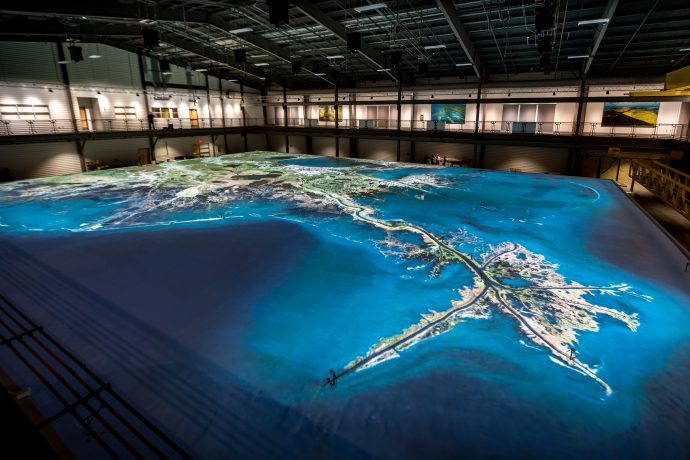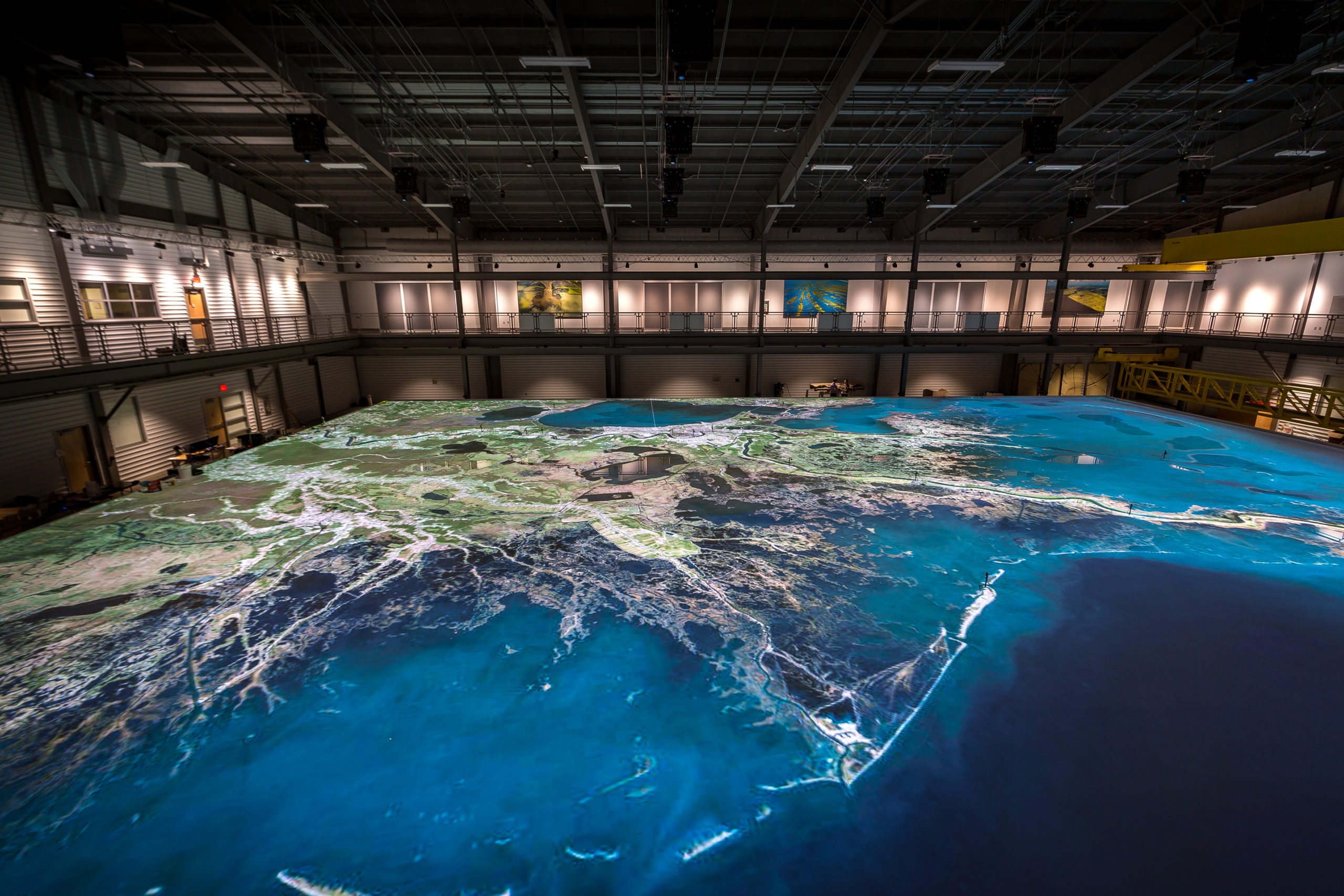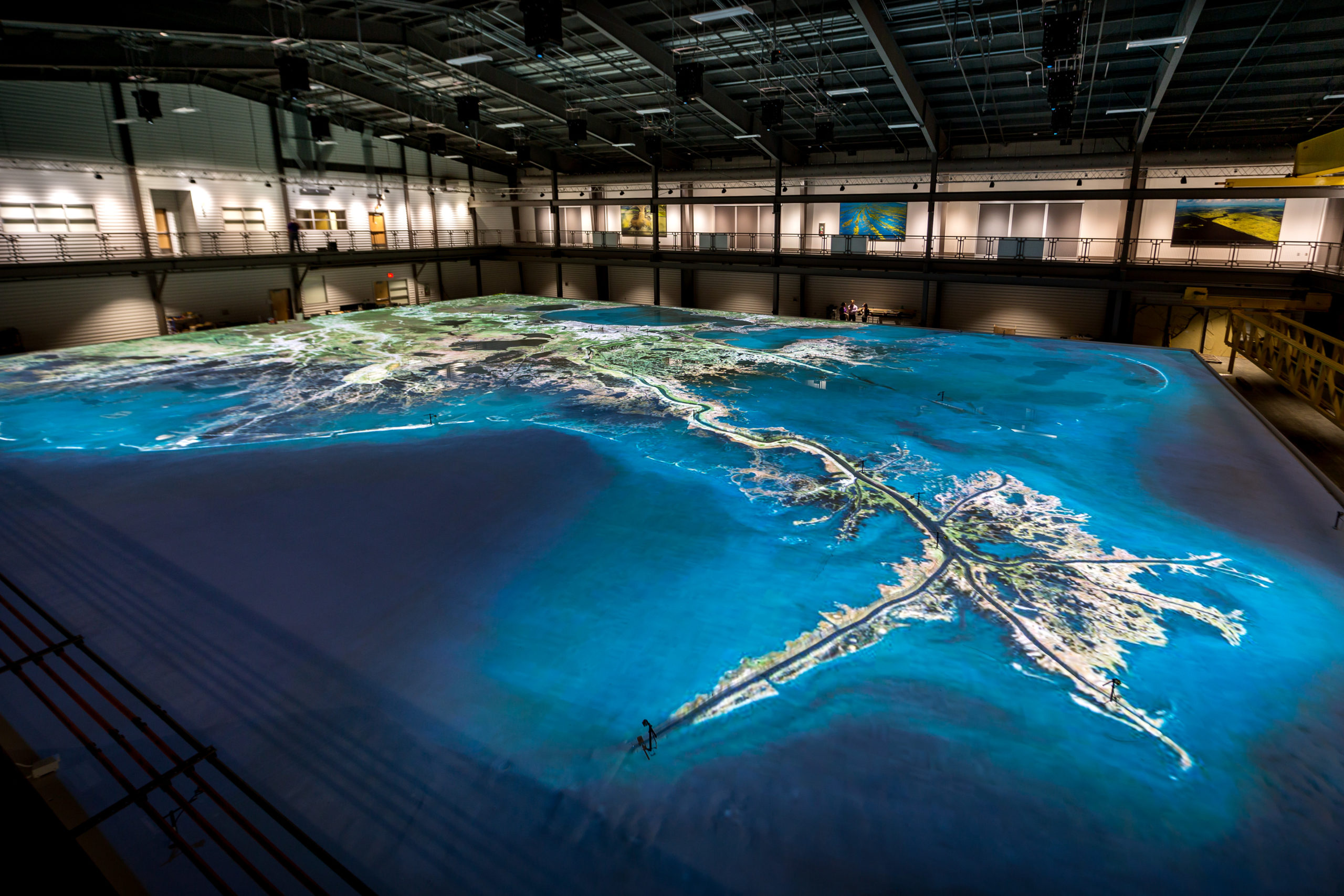
Massive Projection-Mapping Set-Up Shows Potential Impacts Of Disappearing Louisiana Coastline
May 17, 2018 by Dave Haynes

Here’s an unusual but great example of projection-mapping that, for a change, is about education rather than the razzle-dazzle of sports or special events.
The Louisiana Coastal Protection and Restoration Authority (CPRA) and Louisiana State University (LSU) Center for River Studies worked with integrator Interstate Electronics Systems (IES) and Christie on a 90 by 120 foot movable physical model of the Mississippi River done through blended projections.
The projection represents a 190-mile stretch of the river and vividly shows the looming ecological and economic disaster a disappearing coastline. The wetlands south of New Orleans are disappearing at a rate of about a football field every 100 minutes because of rising seas, subsidence, and erosion.
It’s not entirely clear in the press release, but I believe this is at LSU in Baton Rouge.
The set-up uses 20 Christie J Series projectors and runs off a Christie Pandoras Box controller and Christie’s very cool Mystique mapping software. The intent is to educate people on what could happen and what’s underway to stop that.
“We’re going to open up strategic locations along the levees to divert water and sediment from the Mississippi River back into the surrounding basins to rebuild and sustain the wetlands that have been lost. We’ve done a lot of computer modeling of these projects, but we wanted to look at it from a physical model perspective to complement and validate what the computer models have shown,” says Rudy Simoneaux, of the CPRA.

“The primary focus of the model is technical but the underlying extra is communicating the crisis,“ adds Simoneaux. “So much is dependent on the Mississippi River and its wetlands. It’s not just the grass and critters that we’re going to lose with our wetlands; it is the oil and gas infrastructure, shipping, tourism, cultural heritage, and industry along the Mississippi River. We’re always looking for innovative ways to communicate what’s at stake. This model and facility will certainly help.”
“We built a smaller test model a few years ago and as we were building it, we realized it could be difficult for people to get a perspective of what they are looking at. We had panels that we were going to have LSU students paint to match the real thing and then we thought, ‘What if we could project a digital image right down on it to give people perspective of what they are looking at?” says Simoneaux.
The CPRA team went online and started looking over projection-mapping videos on YouTube, eventually seeing a flashy projection job done for game openers at the NBA’s Cleveland Cavaliers home court.
“Something clicked,” says Simoneaux, and they eventually got into a discussion with Christie, whose tech is used by the Cavs. “Christie got back to me and the project went from there.”
“This is the coolest thing I have ever been involved with and it’s also one of the most rewarding,” says Mike Rideau, managing partner of operations for IES. “This project caused me to do research on the coastal crisis, which is very eye-opening, as I have a vested interest in the whole thing since I live in New Orleans.”
Since the mapping system was launched earlier this year, CPRA has welcomed more than 500 students from around the state, and open a lot of eyes of people who come in from Washington, D.C.
“The reaction has been phenomenal! People have given us ideas of other ways we can use the projectors and that’s a good thing, we want that feedback. The whole idea of it is for people to come in and use the facility and better understand our state’s coastal crisis,” says Simoneaux.
Very cool. You could imagine how this sort of thing would be really effective, as well, for more commercial efforts like visualizing large residential and commercial/residential developments at the investment and sales stages, as well as things like theme park proposals.



That was really a knowledge information for all of us, Thank you!
Keep sharing.
It’s a true combination of technology & imagination.